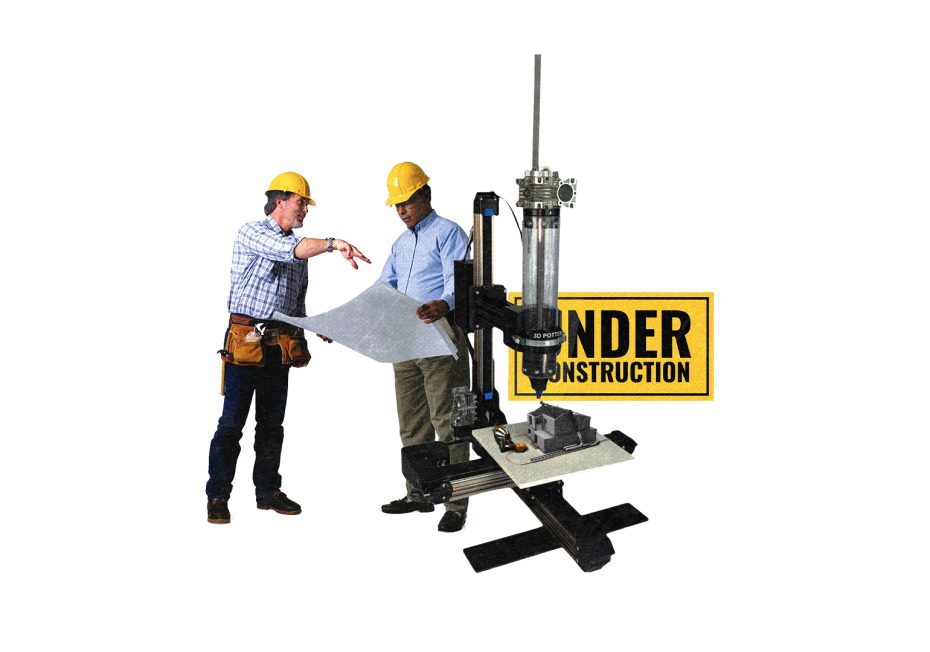I’ve worked for more than a decade in sustainability and realized a startling fact: 7% of global CO2 emission is due to cement production. The number comes out be 2.6 billion tonnes in 2021 and increasing. To give you a perspective, in 1910 the global CO2 emission was 3.03 billion tons. It shows how dire the situation is at present. It motivated me to find efficient construction methods and a disruptive new generation of green construction materials.
One solution is an emerging class of self-healing construction materials. This is a unique class of materials which has the property to self-repair. In practice it means if a crack is created in a slab, the crack gets repaired automatically. The most common method of crack repair is auto filling by calcium carbonate. Calcium carbonate is used as a filler material in regular concrete and non-toxic in nature.
The self-healing mechanism is as follows, firstly an impact must happen on the object and a crack is generated. The energy of the impact propagates by means of crack formation and breaks some special capsules inside the slab. These capsules have bacteria and fodder which get activated when in contact with water. The bacteria start secreting calcium carbonate which fills up the crack. Research has shown upto 2mm cracks can be filled this way.
The use of such self-healing materials has the potential to eliminate repair and replacement of building objects. This will save cost and would reduce emissions hence save the environment. Additionally, it can increase the lifespan of buildings from the current 60 years in Europe to at least 70+. The use of such materials also brings down the carbon footprint of the building. This is important today because many EU countries will be passing green building laws in the next 3-7 years. It means the buildings should have green ratings and sustainable characteristics. The better the ratings the higher the chance for real estate investors to gain a risk adjusted higher return.
“The use of such self-healing materials has the potential to eliminate repair and replacement of building objects”
In terms of zero waste manufacturing there is a trend called 3D Concrete Printing (3DCP). It is recognized by many names, including additive manufacturing and digital fabrication. Concrete 3D Printing is achieved via layer-by-layer extrusion. This novel Industry 4.0 technology brings multiple domains, such as chemists, software developers, designers, structural engineers, automation experts and most importantly creative visionaries, to customize tomorrow’s innovations.
The combination of 3D Printing and Smart Materials are known as 4D Printing.
In the 3D GREEN-CON and 3DSUST-CON R&D projects, co-funded by the European Innovation Council (EISMEA), Finland’s first green self-healing 3D Concrete was developed industrially. The self-healing capacity combined with use of recycled materials makes it eco-friendly.
“Finland’s first green 3D self-healing concrete”
In another approach to self-healing, the use of CEM I cement is crucial for the proper functioning of an autogenous self-healing system in non-metal reinforced systems. Cement hydration will create CSH (Calcium Silicon Hydrates) and other components. Among these other components we get slaked lime i.e., calcium hydroxide. Upon reaction with CO2 (air and environment) the final product is calcium carbonate. The combination of stimuli responsive self-healing and autogenous self-healing can form a robust system which will greatly reduce cost and environment footprint to say the least. Calcium carbonate acts as a non-toxic filler material which is widely used for decades. This filler contributes to durability.
“The combination of stimuli responsive self-healing and autogenous self-healing can form a robust system which will greatly reduce cost and environment footprint to say the least “
Snapshot on Healing Agent and Capsule
To suit as a healing agent for self-healing concrete, several requirements need to be fulfilled. A long shelf life is required. In practice the healing agent will stay embedded inside the cementitious matrix at the time of casting hence reactivity should remain until cracks appear.
The fluidity should be good to allow the agent to flow out of the capsules to fill narrow micro-cracks. At low fluidity the healing agent will be absorbed by the pores of the cementitious matrix or seep out of the crack. The self-healing process should preferably take place without
human intervention. Single-component agents which initiate upon contact with moisture or water are much more appropriate for encapsulation. In addition, multicomponent agents which harden at room temperature upon contact with a second component can be used. In the latter case, both components will be embedded in separate capsules which may result in an extended shelf life. Reaction time is a key factor i.e., it should not be too fast or slow but optimum for the system under consideration e.g., a few days. Complete filling of crack is essential to prevent ingress of aggressive substances. Hence, expansion of the healing agent upon reaction is a desired property as bigger crack spaces can be filled in this way. The encapsulation of single and multicomponent polyurethane has also been reported as a promising healing agent in addition to bacterial based solutions.
To encapsulate various healing agents, the use of glass, ceramic, and polymeric capsules have been known. Suitable encapsulation materials should preferably be able to survive the concrete mixing process, so a certain flexibility and strength of the capsules is required.
The self-healing mechanism gets activated upon crack formation i.e., the capsules need to become brittle enough to break as soon as a crack appears.
Healing agent and capsule system must have limited influence on the workability of concrete. An optimum capsule design needs to be made to allow maximum probability of crack going through it and an optimal release efficiency. Moreover, the self-healing system must allow complete filling of the created crack. The encapsulation material must withstand the harsh conditions inside the concrete matrix (pH 10) and must be compatible with the healing agent which it should protect against the concrete matrix.
Law of Fives
The “Law of Fives” states that $1 spent on design and construction is equivalent to $5 spent as damage initiates, before it propagates; $25 once deterioration has begun to propagate, and $125 after extensive damage has occurred.
In my opinion, this provides added reason for a shift towards self-healing technologies that make good business sense.
More Eco-Friendly
The carbon footprint can be further reduced by use of compatible recycled materials in the concrete mix. Circular materials change every aspect of construction and affects the entire life cycle of a building. In regular concrete, the ashes, slags, and mineral engineering wastes have proven compatible. We need to be careful that they don’t react with the self-healing system. We have found use of recycled aggregate from construction and demolition waste is a good option. Additionally, as 60% or more of concrete is aggregate hence using recycled materials for substitution can have a major effect.
“Circular materials change every aspect of construction and affects the entire life cycle of a building”
What does our young talents say
During my teaching sessions at a Massachusetts Institute of Technology USA, Circular Economy course, I was fortunate to find out that there is enough grassroots interest in these materials, with young talent finding them an interesting area. Not only did they understand the underlying concepts of technology and sustainability that I taught, but they actively promoted them by taking things one step further and asking about the possibility of creating 3D-printed self-healing habitats, retrofitted spaceships and underwater buildings. This is truly a step in the right direction.
Green renovation needs to think longer lifespans and circular design
Given the EU Green Deal and the need to decarbonize, utilize waste and adopt a new manufacturing system we need to think in terms of sustainability, modular design from the beginning especially for new trends like 3D self-healing concrete. I am optimistic and feel that our joint efforts would create a society which is inclusive and sustainable.
I invite research and technology organizations, universities, corporations, public bodies, and funding organizations to collaborate and supercharge innovation, implementation, and application of this new emerging industry 4.0 trend.
Mr. Gaurav is a sustainability leader from the Finnish industry. He is currently the head of consortium and 3D materials development lead of the European Innovation Council (EISMEA) co-funded R&D project called 3DSUST-CON. Gaurav has led several EU R&D projects on 3D printing and was the first to introduce 3D concrete printing and 4D smart materials for construction in Finland. His expertise in the area of 3D Printing, Green Tech, Sustainability and Circular Economy has been called upon by the European Parliament, and he contributed to the European Green Deal process. Mr. Gaurav also teaches engineering and sustainability at various Universities in Europe (Germany, Denmark) and USA for several years now.
Mr. Gaurav has an entrepreneurial and founder mindset. He has set up several product lines in the area of sustainability and digitalization.

















